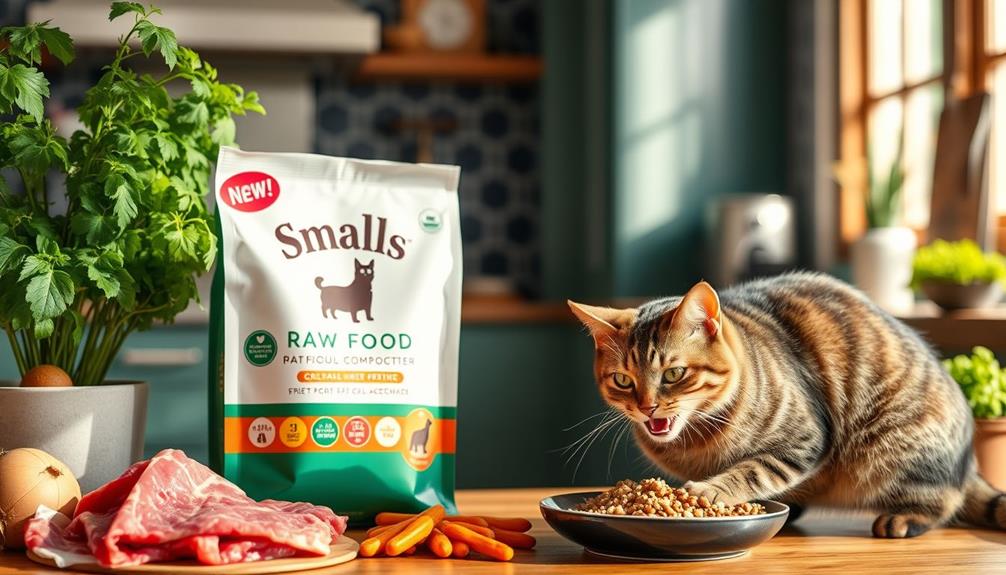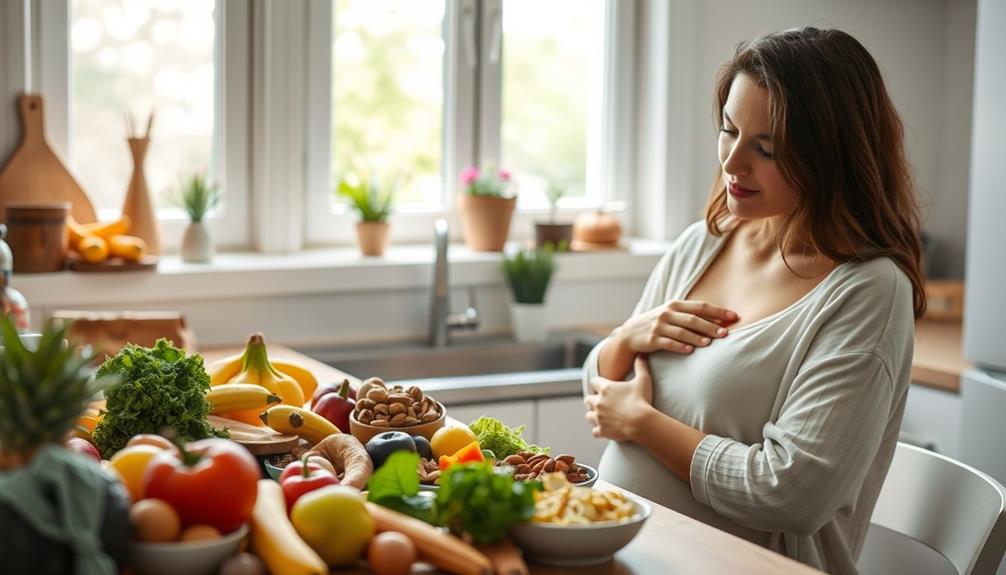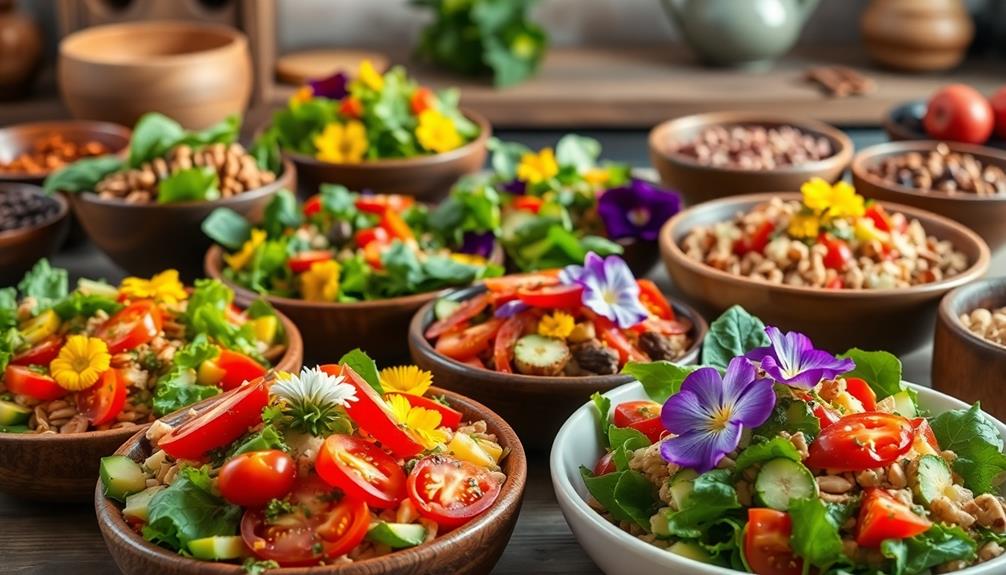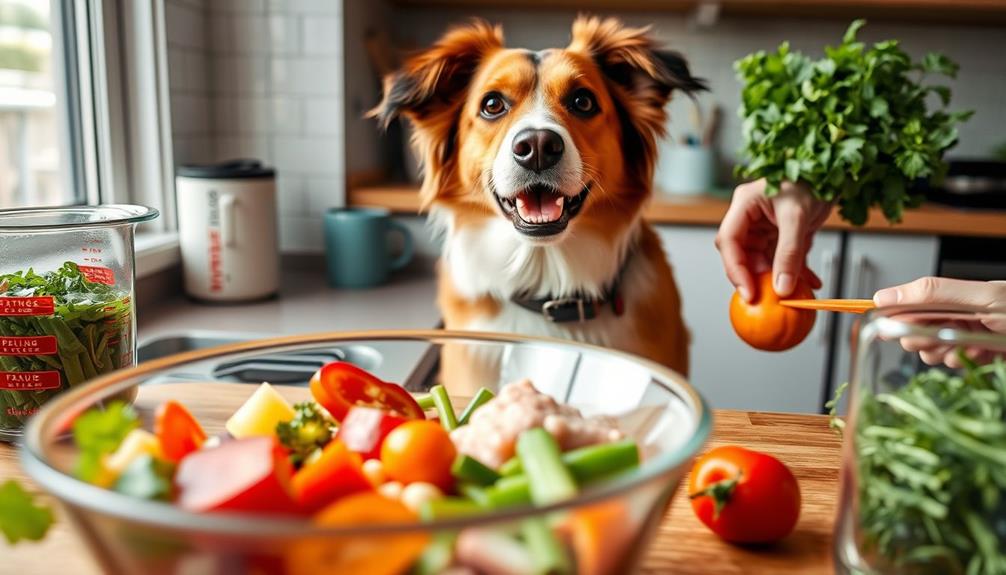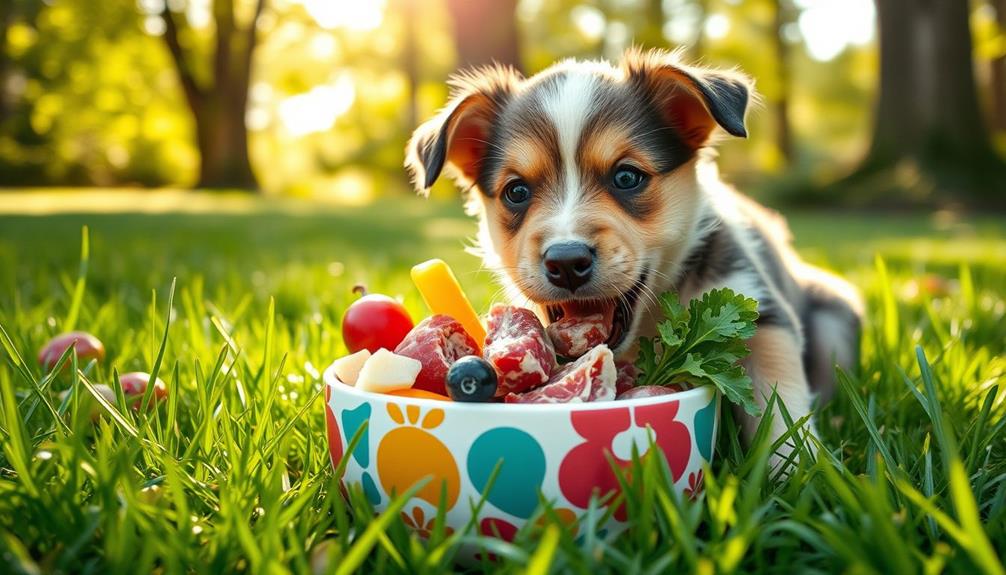Yes, Smalls offers raw food options alongside fresh, human-grade meals tailored for your cat. Their freeze-dried raw food features high-quality, USDA-certified ingredients and is packed with protein, keeping your feline's nutritional needs in mind. You'll find protein-rich varieties like chicken, turkey, and beef in their product range. Smalls avoids fillers and artificial additives to guarantee a healthy diet. Plus, they provide customizable meal plans, making it easy to find the right fit for your kitty. Stick around to learn more about what sets Smalls apart from other cat food brands.
Key Takeaways
- Smalls offers both fresh, human-grade food and freeze-dried raw food options for cats.
- The brand focuses on high-protein, filler-free recipes made with USDA-certified ingredients.
- Smalls' freeze-dried raw food provides a convenient way to feed a raw diet.
- Ingredients are sourced from the U.S. and Canada, ensuring quality and safety.
- Customizable meal plans cater to the specific dietary needs of cats.
Overview of Smalls Cat Food
Smalls Cat Food stands out in the pet food industry by offering a subscription service for fresh, human-grade meals tailored specifically for your feline friend. Their range of Smalls cat food products includes options like Fresh Bird (chicken), Fresh Other Bird (turkey), and Fresh Cow (beef).
With a focus on high-protein, filler-free recipes, Smalls uses USDA-certified ingredients to guarantee your cat gets safe, quality nutrition without artificial additives or meat by-products. Incorporating high-quality ingredients, like those found in nutritional benefits of fresh foods, Smalls cat food aims to promote peak health for your pet.
Smalls features both human-grade fresh food and freeze-dried raw food options, giving you the flexibility to choose the best diet for your cat's needs. Each meal is crafted to meet the specific dietary requirements of obligate carnivores, utilizing gentle cooking methods that preserve essential nutrients and moisture crucial for feline health.
You can customize your cat's feeding plan through a quick quiz, guaranteeing you find the perfect match for their preferences. Plus, with a money-back guarantee if your cat doesn't accept the food, you can confidently explore the benefits of Smalls cat food products without worry.
Your feline friend deserves the best, and Smalls makes it easy to provide just that.
Ingredient Sourcing and Quality
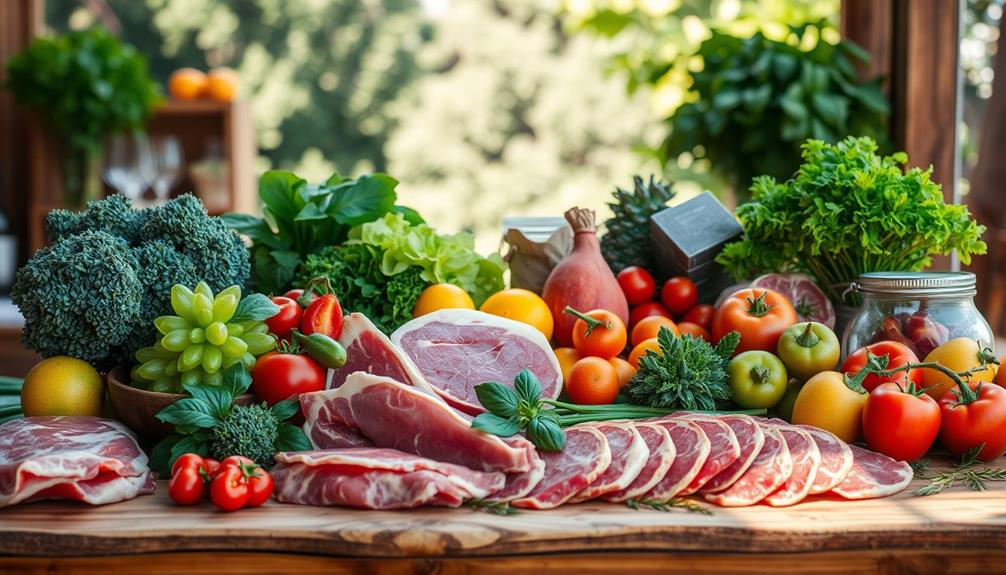
When it comes to ingredient sourcing and quality, Smalls cat food prioritizes human-grade ingredients that are carefully sourced from the U.S. and Canada, ensuring both safety and high standards. You can trust that Smalls avoids fillers, artificial additives, and meat by-products, focusing solely on high-quality protein sources like chicken, turkey, and beef.
Additionally, selecting the right food for your pet is essential for their overall health, much like how choosing the right cold medications is important for effective relief in humans.
Each recipe is developed in collaboration with Dr. Susan Lauten, Ph.D., a pet nutrition consultant, making sure it meets AAFCO guidelines for nutritional completeness. Smalls emphasizes short ingredient lists, listing specific organ meats to enhance nutritional value. This transparency is something you won't find in many other brands that use generic terms.
To maintain food safety and quality assurance, Smalls conducts regular testing for contaminants like E. coli and salmonella. This commitment to ingredient sourcing and high-quality standards means you can feel confident in the food you choose for your cat.
With Smalls, you're not just feeding your pet; you're providing them with a carefully crafted meal made from the best ingredients available.
Product Varieties Offered
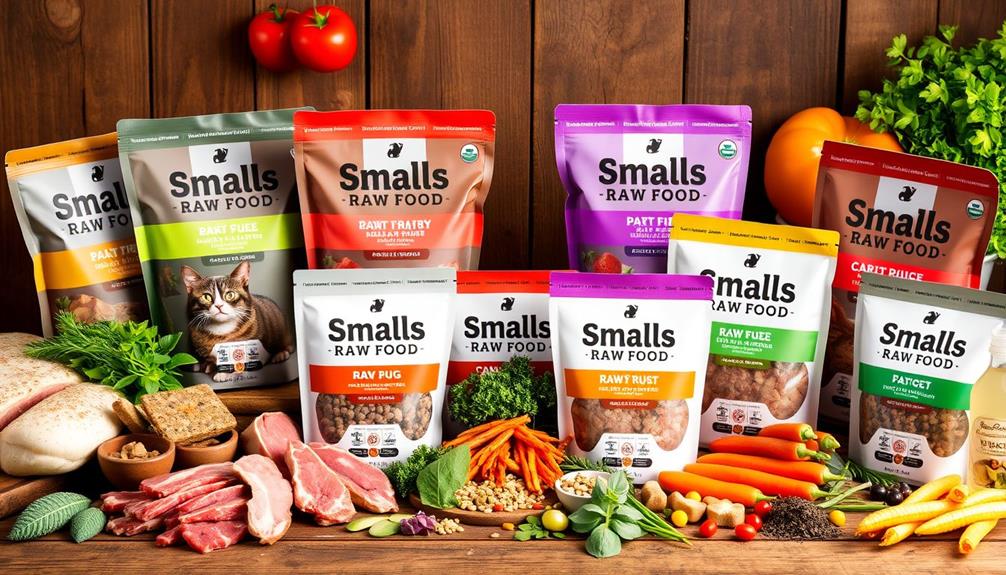
When you explore Smalls, you'll find two main product lines: Fresh Food and Freeze-Dried Raw.
Each line offers a variety of flavors designed to meet your cat's dietary needs, from chicken and turkey to beef and duck.
These options allow for a tailored approach to your pet's nutrition, reflecting the importance of budgeting for pet care in your overall financial planning.
Plus, you can customize meal plans to guarantee your feline friend gets the perfect balance of nutrition and taste.
Fresh Food Options
Discover a wide range of fresh food options with Smalls Raw Food Brand, designed to cater to your cat's unique tastes. Smalls offers an impressive selection of fresh pet food flavors, including Fresh Bird (chicken), Fresh Other Bird (turkey & chicken liver), and Fresh Cow (beef).
Each of these raw cat food recipes is crafted from high-quality, human-grade ingredients, ensuring your furry friend enjoys a delicious and nutritious meal. Proper nutrition is crucial for your cat's well-being, much like how hamster care requires a balanced diet to maintain health and vitality.
To accommodate different preferences, Smalls provides both smooth and ground textures, making it easier for even the pickiest eaters to enjoy their food. Each recipe meets AAFCO guidelines for nutritional completeness, so you can feel confident that your cat's diet is well-balanced.
What's more, all ingredients are sourced from the U.S. and Canada, emphasizing quality by avoiding fillers, by-products, and artificial additives.
If you're unsure which flavor your cat will love best, Smalls offers a sampler option for first-time customers. This way, your cat can explore various Smalls recipes and textures before you commit to a subscription.
Freeze-Dried Varieties Available
Looking for convenient yet nutritious options for your cat? Smalls offers a range of freeze-dried raw food varieties that can make mealtime easier while keeping your feline friend's health in check.
With options like Raw Bird (chicken), Raw Other Bird (turkey), and Raw Water Bird (duck), you can find the perfect flavor to satisfy your cat's cravings. These options are made with natural ingredients that promote overall health and wellness, guaranteeing your pet gets the nutrients they need.
These freeze-dried raw recipes retain the essential nutrients of the raw ingredients while eliminating the risks associated with handling raw meat. They're designed for obligate carnivores, providing a high-protein diet with low carbohydrate content, which aligns perfectly with your cat's natural dietary needs.
Plus, preparation is a breeze—just rehydrate the food with water before serving.
Smalls' freeze-dried options are an excellent supplement to your cat's diet, promoting hydration and overall health benefits similar to their fresh food offerings.
Customer Feedback and Experiences

Customer feedback on Smalls Raw Food Brand reveals a blend of satisfaction and concern among pet owners. Many customers rave about the high-quality ingredients that lead to noticeable health improvements in their cats, similar to how certain essential oils can enhance overall well-being essential oils for respiratory health. Others, however, express concern about the cost and the inconvenience of storing and handling raw food. Despite the mixed reviews, many customers remain loyal to the brand, citing the numerous benefits of raw dog food for their pets’ overall health and well-being. The company continues to strive to address these concerns and provide the best possible product for their customers’ furry friends.
You might notice positive changes in your feline's coat, energy levels, and digestion, as 88% of customers report similar benefits after switching to Smalls. However, not all reviews are glowing. Some pet owners voice concerns over formula changes that resulted in their cats refusing to eat new offerings.
Additionally, issues with customer service have surfaced, including poor response times and packaging errors, which can detract from your overall experience.
If you opt for the subscription model, you may appreciate the convenience it offers. However, others express frustration with automatic renewals and the limited support options available.
Balancing the pros and cons is essential when considering Smalls, as customer feedback highlights both the positive outcomes and the areas needing improvement. Ultimately, your experience may vary, but understanding these insights can help you make an informed decision for your cat's nutrition.
Pricing and Shipping Details
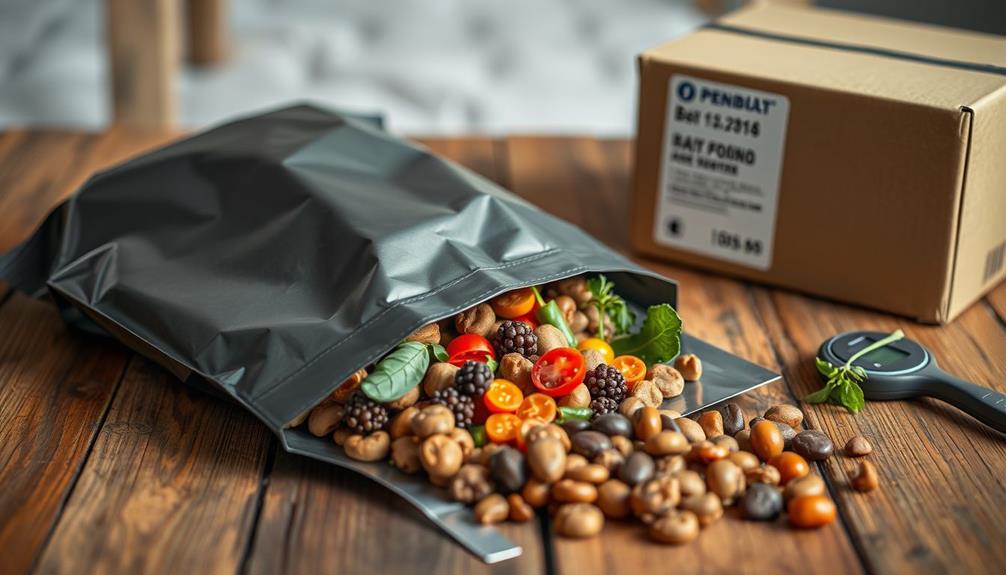
Affordability and convenience are key factors for pet owners considering Smalls Raw Food Brand. Smalls offers a subscription model, making it easy to keep your cat fed without the hassle of frequent trips to the store.
Understanding costs associated with pet food, similar to financial considerations for elderly care, is essential for budgeting. Pricing starts at about $3 per day for a single-cat household, which is quite manageable for many budgets. Each 5-ounce package costs $4, and if you're a new customer, you'll enjoy a 20% discount on your first order.
For those who want to explore flavors before committing, Smalls provides a sample pack that includes 10 packages, allowing you to try various options. Daily feeding costs can range from $1.00 to $3.50, depending on your cat's specific dietary needs—so you can find a solution that suits your budget.
One of the standout features is the free shipping on all subscription orders, enhancing the overall convenience. You won't have to worry about extra costs piling up at checkout, making it easier than ever to provide your furry friend with high-quality nutrition.
With Smalls, you'll get both value and peace of mind.
Health Benefits for Cats
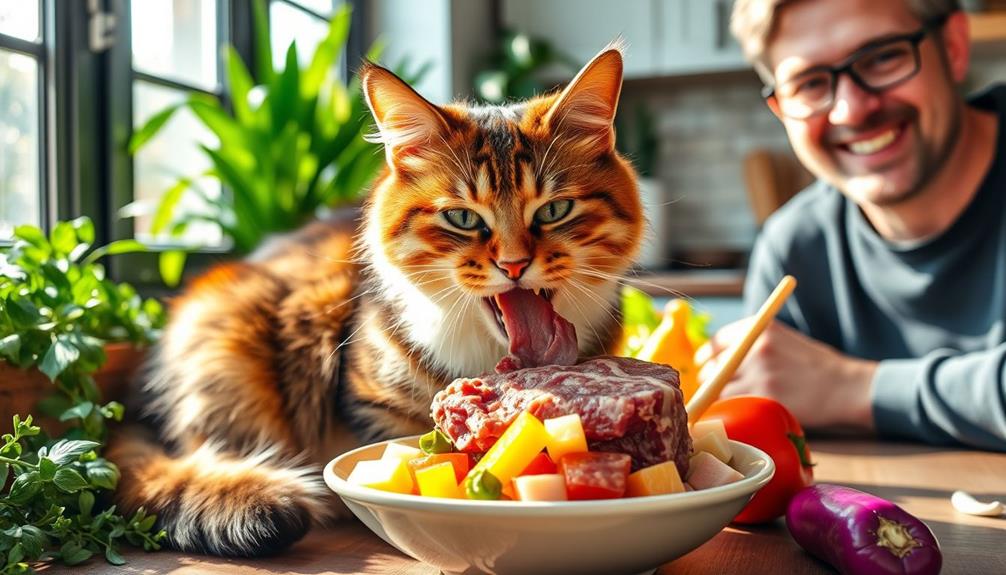
Switching your cat to Smalls raw food can lead to improved digestion and nutrient absorption, making mealtime more beneficial.
Incorporating a balanced diet, much like the importance of a balanced diet rich in fruits, you might also notice a shinier coat and increased energy levels as your feline adjusts to the high-quality ingredients.
Many pet owners report these health benefits after making the change, highlighting how Smalls can enhance your cat's overall well-being.
Improved Digestion and Absorption
Many cat owners have noticed significant improvements in their pets' digestion and nutrient absorption after incorporating Smalls Raw Food into their diets. The high protein content in Smalls, like the Fresh Smooth Fish recipe with an impressive 62.5% protein, promotes better digestion, allowing your cat to break down and utilize food more effectively. This aligns with the understanding that development influenced by biological factors plays an essential role in overall health.
By using human-grade ingredients, Smalls guarantees that there are no fillers, which often lead to digestive issues. This focus on quality results in improved overall digestive health for your cat. Many customers have reported enhanced digestion after switching to Smalls, with 88% noting health improvements, including reduced hairballs and increased energy levels.
Additionally, the gentle cooking methods used help preserve essential nutrients, contributing to better nutrient absorption. This means your cat isn't just eating; they're truly benefiting from their meals. You may even notice a reduction in litter box odor, a sign that your cat is efficiently absorbing nutrients.
Enhanced Coat Condition
When you choose Smalls Raw Food for your cat, you're not just providing a meal; you're investing in their coat health. The high-quality, human-grade ingredients in Smalls cat food promote healthier skin and coat conditions, leading to shinier and softer fur.
Many cat owners have reported an impressive 88% satisfaction rate regarding improvements in coat quality and reduced shedding. Moreover, similar to how Noble Gold offers competitive pricing in precious metal investments, Smalls provides a premium product that justifies its price through superior quality and nutritional value.
One key factor contributing to this enhanced coat condition is the high protein content found in Smalls recipes. These proteins supply essential amino acids that support ideal fur growth and maintenance.
You'll likely notice your cat's coat looking more vibrant and well-kept after shifting to the healthiest cat food available.
Additionally, regular consumption of Smalls cat food can help reduce hairballs, thanks to its superior digestibility and nutrient absorption. This means your cat can efficiently utilize the nutrients for a healthier coat.
Increased Energy Levels
Cats that eat Smalls Raw Food often experience a considerable boost in energy levels, thanks to the ultra-high protein content in the recipes. Shifting to a high-protein diet can lead to increased liveliness, with many cat owners reporting their pets becoming more playful and active.
Here's a quick look at how Smalls contributes to your cat's energy:
| Factor | Benefits |
|---|---|
| High-Protein Content | Supports muscle development and energy |
| Balanced Diet | Guarantees essential nutrients for overall health |
| Hydration | Moisture in wet food aids digestion and energy |
The nutrient-rich ingredients in Smalls not only maintain a balanced diet but also enhance your cat's overall health. Increased hydration from the moisture in their wet food options plays a crucial role in digestion, which further contributes to those increased energy levels. Many pet owners notice their cats' activity levels appreciably improve just weeks after switching to Smalls, often correlating with a shinier coat and reduced litter box odor. So, if you're looking for a way to boost your feline friend's energy, consider making the switch to Smalls Raw Food.
Comparison With Other Brands
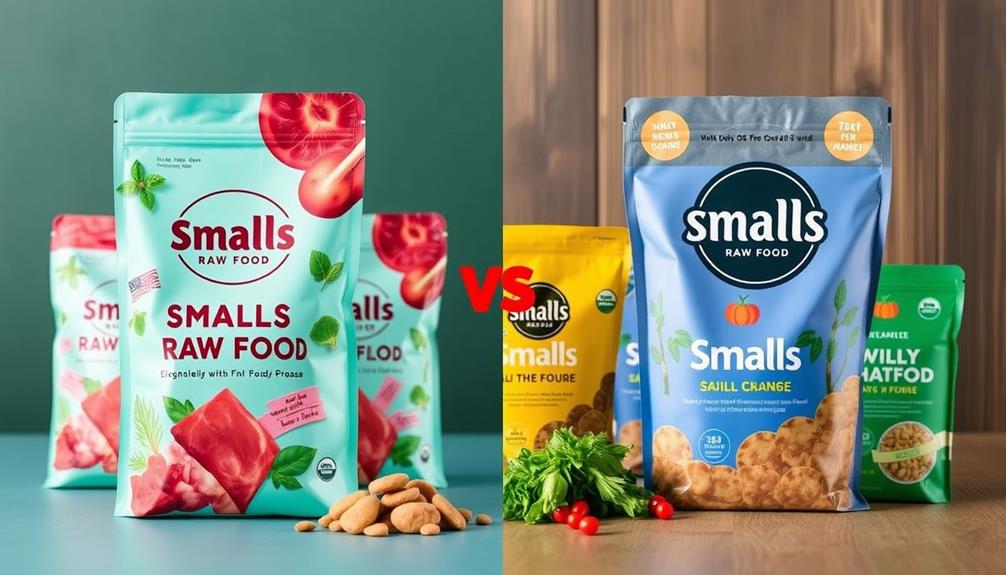
In comparing Smalls to other pet food brands, the differences in quality and formulation become strikingly clear. Smalls stands out with its commitment to using human-grade ingredients sourced from the U.S. and Canada, setting it apart from conventional cat food brands that often rely on low-quality fillers and meat byproducts. This dedication to quality results in a healthier diet for your cat, promoting better overall health and wellness.
Moreover, Smalls offers both fresh food and freeze-dried raw options, maintaining the nutritional benefits of raw diets while minimizing handling risks. The high protein content, with recipes like the Fresh Smooth Fish containing 62.5% protein, aligns perfectly with the dietary needs of obligate carnivores.
Additionally, Smalls provides a customizable meal plan tailored to your cat's specific needs, which is a significant advantage over many other brands that offer generic options. This personalized approach can lead to improved health outcomes for your pet.
Frequently Asked Questions
Has Smalls Ever Been Recalled?
Smalls hasn't had any recalls since it started in 2017, which speaks to its strong safety record. You can trust that they conduct regular testing and adhere to strict nutritional standards for your cat's health.
Is Small Cat Food Made in the Usa?
Yes, Smalls cat food is made in the USA, specifically in Woodbridge Township, New Jersey. You can trust that their ingredients are sourced from the U.S. and Canada, ensuring high-quality standards for your cat's nutrition.
Is Smalls Food Raw or Cooked?
You might be wondering if Smalls offers raw or cooked food. Well, it does both! The fresh meals are gently cooked, while the freeze-dried options provide the benefits of raw without the handling risks. This variety allows pet owners to choose the best option for their furry friends based on their individual needs and preferences. The gently cooked meals retain more nutrients while still being safe to handle and serve. On the other hand, the freeze-dried options provide all the benefits of raw food diet, such as improved digestion and healthier skin and coat, without the need for refrigeration and potential contamination risks. Overall, Smalls provides a convenient and flexible way for pet owners to provide nutritious and balanced meals for their beloved pets.
Is Smalls Aafco Approved?
Yes, Smalls cat food is AAFCO approved. They guarantee their recipes meet nutritional guidelines and conduct regular testing, so you can trust that your cat's food is complete, balanced, and safe for their health.
Conclusion
In summary, Smalls cat food stands out for its commitment to quality raw ingredients and tailored nutrition. For instance, imagine a cat named Whiskers, who moved from kibble to Smalls and saw a noticeable boost in energy and coat shine within weeks. This brand not only prioritizes your cat's health but also makes mealtime enjoyable. If you're looking to elevate your feline's diet, Smalls might just be the perfect choice for you both.

